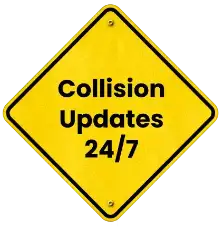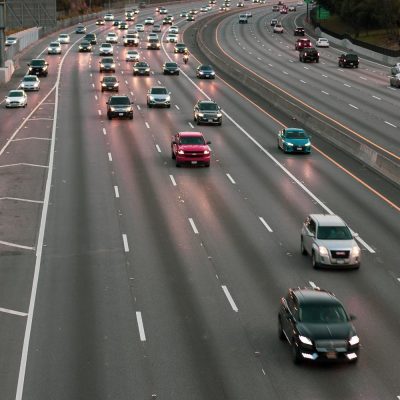
Speeding & Enforcement Impact on I-20 Accidents


Interstate 20 (I-20) stretches across the southern United States, connecting South Carolina to Texas through major metropolitan centers. It serves as a vital corridor for commuters, freight haulers, and travelers. However, its open stretches, heavy truck traffic, and inconsistent patrol coverage create ideal conditions for speeding and high-impact collisions.
According to the National Highway Traffic Safety Administration (NHTSA), speeding contributes to nearly one-third of all traffic fatalities nationwide. This statistic highlights how speeding continues to fuel accident rates on interstates like I-20, where high velocity and driver fatigue often collide.
Effective speed enforcement I-20 strategies play a critical role in reducing dangerous behaviors and improving roadway safety. We will explore this subject in the upcoming paragraphs.
Why Speeding Increases Crash Risks 
Speeding changes how vehicles behave on the road, affecting control, braking, and visibility. On a busy interstate like I-20, even small increases in speed can dramatically reduce reaction time.
- Reduced Reaction Time: Drivers traveling too fast have less time to identify and avoid obstacles or traffic changes.
- Longer Stopping Distance: Doubling speed more than doubles the distance needed to stop safely.
- Greater Crash Severity: High-speed crashes involve more energy, increasing the chance of serious injury or death.
These three physical effects explain why speeding in highways often ends in catastrophic outcomes. They also demonstrate why speed management remains central to reducing fatalities on major corridors like I-20.
Enforcement and Its Impact Along I-20
Law enforcement agencies across multiple states share responsibility for monitoring speeds along I-20. Patrols target high-risk areas where speeding is most common. Campaigns like “Obey the Sign or Pay the Fine” and “Drive to Arrive Alive” are among several initiatives aimed at deterring reckless driving behaviors.
Still, enforcement levels vary widely across states. Georgia and Alabama maintain strong patrol visibility, particularly near Atlanta and Birmingham. In contrast, certain stretches through Mississippi and Texas are more lightly monitored, leading to higher average speeds and greater crash frequency.
The NHTSA emphasizes that consistent, visible enforcement remains one of the most effective ways to control speed-related collisions. When drivers know enforcement is active, compliance rises and fatality rates drop. Conversely, reduced patrol presence leads to faster travel speeds and higher risks.
Environmental and Roadway Challenges
The I-20 corridor presents unique environmental and structural hazards that interact with speeding to increase crash likelihood. Drivers should remain alert to construction zones where lane shifts, narrow shoulders, and sudden slowdowns require extra caution.
Unfamiliar drivers often underestimate how quickly these conditions can change, leading to overcorrection or loss of control at high speeds. Adjusting speed to match current conditions is essential for safety along every segment of I-20.
Behavioral Factors in Speeding
Human psychology plays a significant role in speed enforcement I-20 challenges. Drivers frequently justify speeding as “keeping up with traffic”. This herd behavior is particularly dangerous on long, rural stretches where the illusion of safety can tempt drivers to accelerate beyond control.
Fatigue and frustration are also leading contributors. Hours behind the wheel cause reduced focus, slower reactions, and risky maneuvers such as tailgating or abrupt lane changes. In city traffic, impatience during congestion can prompt aggressive acceleration once the roadway clears.
Recognizing these patterns and managing emotions is key. Staying patient and alert helps prevent speeding from becoming a subconscious or habitual behavior.
Tips for Safer Driving on I-20
Driving safely on I-20 requires both mindfulness and discipline. A single poor decision at high speed can have devastating consequences. Following this essential guideline can make a life-saving difference:
- Follow posted speed limits and adapt speed to conditions. Slowing down in bad weather, construction areas, or heavy traffic allows more time to react and reduces impact severity if a crash occurs.
Consistent attention to speed limits not only prevents accidents but also improves traffic flow and reduces fuel consumption. Every driver who maintains control through responsible driving contributes to safer conditions for all motorists.
Technology and Enforcement Innovations
Modern technology continues to shape how speeding is detected and prevented on I-20. Radar, laser detectors, and automated cameras are now widely deployed along high-risk sections. These tools provide real-time data that law enforcement uses to target specific problem areas.
Vehicle advancements also play a growing role. Adaptive cruise control, lane-keeping assist, and forward-collision warning systems help drivers maintain consistent, safe speeds even during fluctuating traffic.
In the future, smart traffic systems may dynamically adjust posted speed limits based on conditions such as rainfall, congestion, or visibility.
Responding to a Speed-Related Accident
If a speed-related accident occurs, prioritize safety and quick response. Move vehicles off the roadway if possible, activate hazard lights, and call 911 immediately. Once everyone is secure, collect vital information such as weather conditions, skid marks, and photos of the scene.
Police reports are especially valuable in proving that speeding contributed to a collision. Even if injuries seem minor, it’s crucial to document symptoms, medical visits, and repair estimates. This evidence supports both insurance claims and potential legal action.
Legal and Claim Considerations
Victims of speeding crashes on highways face not only physical injuries but also significant financial burdens. Liability often depends on proving that excessive speed was a major factor in the crash. Evidence such as vehicle data recorders, eyewitness statements, and law enforcement reports can help establish fault.
Compensation may cover medical expenses, lost income, pain and suffering, and property damage. In cases involving reckless or habitual speeding, courts may award punitive damages to hold drivers accountable. Consulting an attorney experienced in interstate accident claims ensures that victims understand their options and pursue fair recovery.
Building Safer Driving Habits on I-20
Reducing speeding-related accidents on I-20 starts with a shared commitment among drivers, law enforcement, and policymakers. Strict enforcement and education campaigns have proven effective, but lasting change relies on everyday decision-making.
Slowing down, maintaining focus, and respecting limits are simple actions that save lives. Every responsible choice adds to a culture of safety that makes highways like I-20 safer for everyone.
If you or someone you know has been injured in a speeding crash on the highway or affected by inconsistent speed enforcement on I-20, we can put you in touch with an I-20 accident attorney who can help you understand your rights and recovery options.
